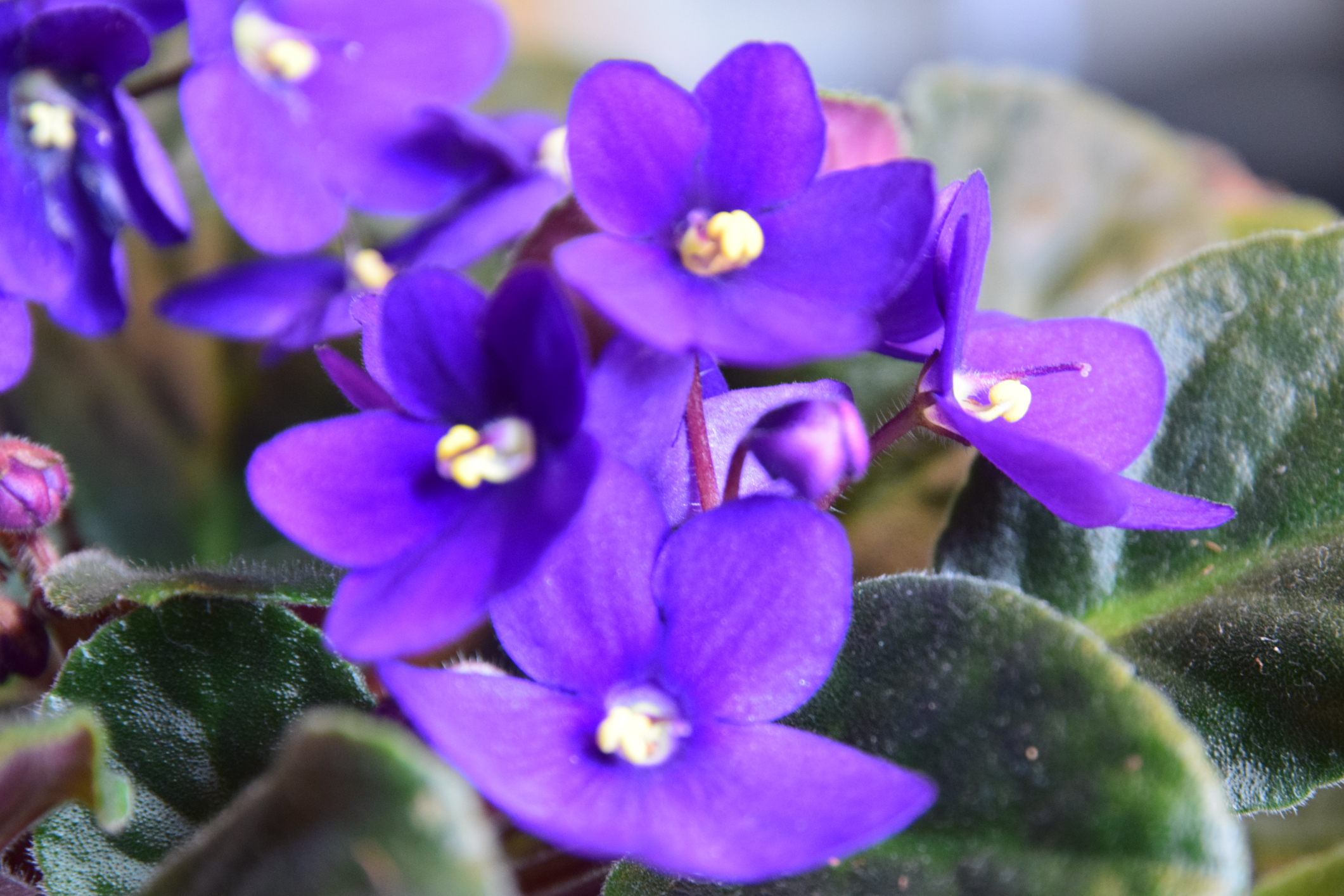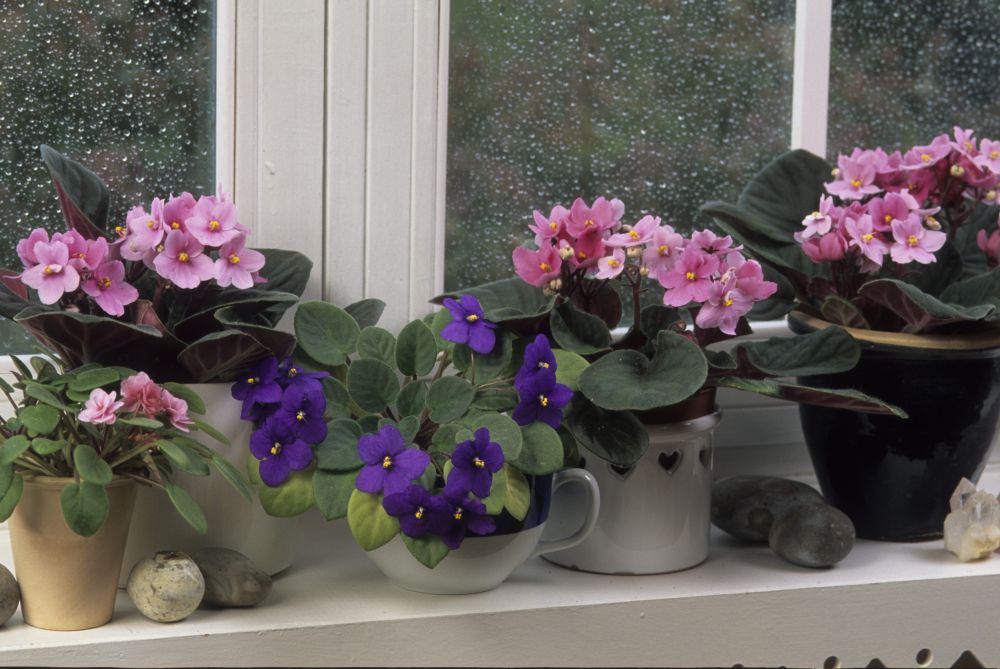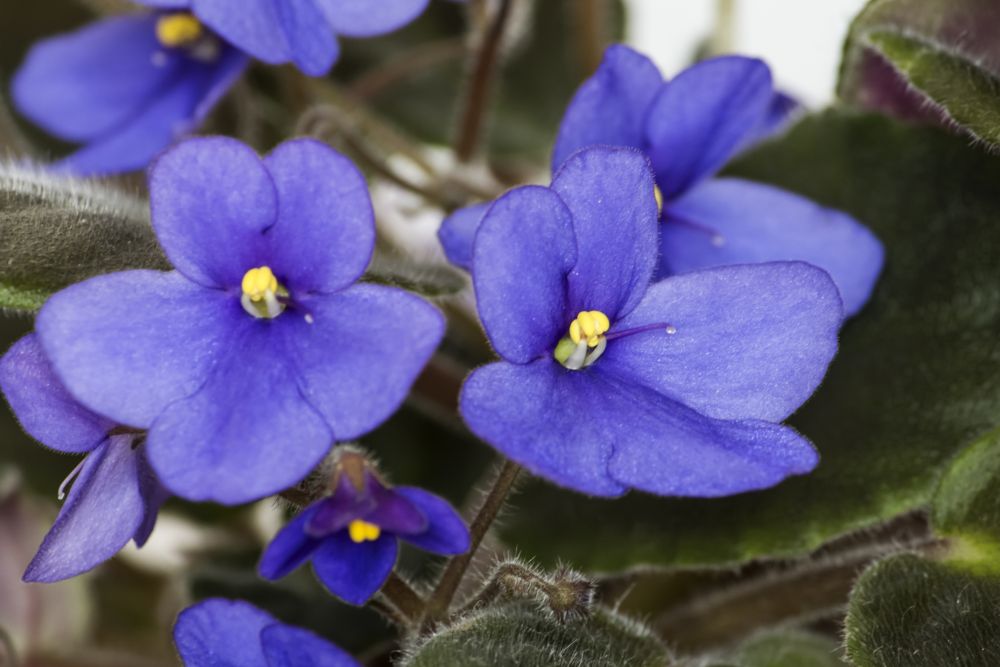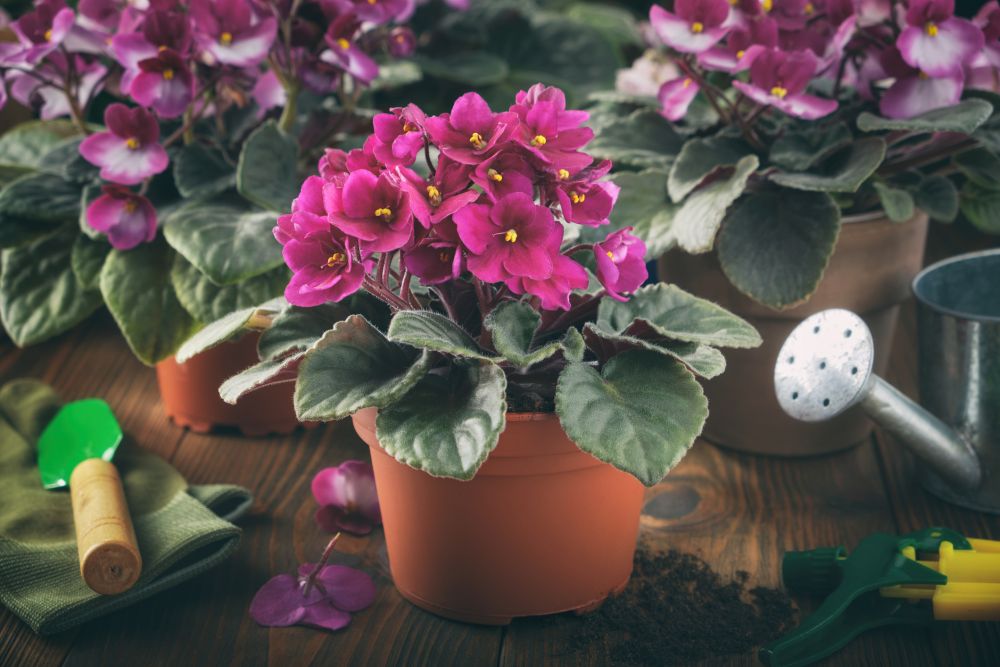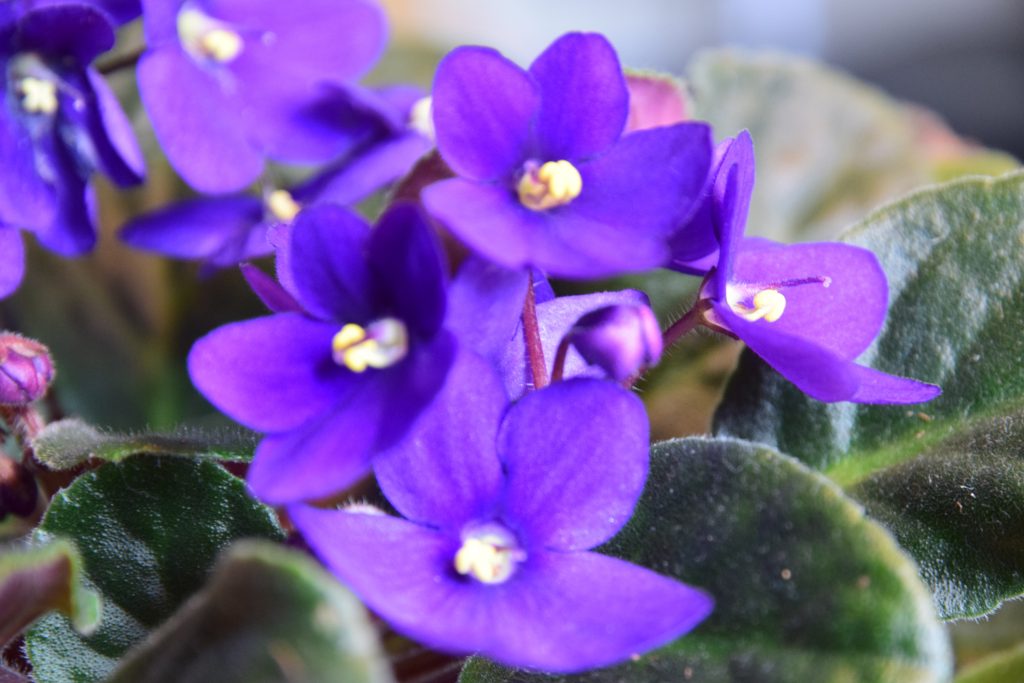African Violets Problems – Troubleshooting Common Flowering, Propagating, And Pruning Issues
It’s no secret that African violets can be a handful. Even experienced gardeners have a hard time keeping up with these demanding houseplants. If you use the wrong fertilizer, the plant will sure let you know about that. And if you give it too much or too little fertilizer, you’re in serious trouble.
But there’s no denying the exquisite charm of the African violets who are not even violets at all. And despite their difficult nature, their popularity keeps growing. So how can you grow these cultivars without putting yourself out? Here we’ll tackle the most common African problems and help you either fix them or avoid them altogether.
African Violets Not Flowering
One of the most common problems when growing African violets is when they simply refuse to bloom. You wait for their magical flowers to emerge but in vain. The plant keeps growing and its foliage looks as healthy as ever. But there are no flowers. What happened?
As it turns out, there are many factors that contribute to this problem. Here are some of them.
- The plant has been moved. You either moved it from its regular place to another room, or you just bought the new plant from the nursery. After the blooms that came with the plant fade, no buds appear again.
- Too little light. If the plant used to bloom, then suddenly stopped, that could be attributed to little sunlight. It could be the changing seasons, or the place where you keep the plant is not getting as much sun as it used to.
- Inadequate watering. We talked before about the watering requirements of African violets and how they don’t like the soil to go dry. Overwatering can also stop the plant from flowering.
- Low humidity could also be another reason why your plants are not flowering.
- Fluctuating temperatures in the room.
How to Fix it
When facing the problem of African violets not flowering, you need to examine the conditions around the plant carefully. It usually takes time and some work to coax the violets to start blooming again. Here are a few tips.
- If you just bought the plant, allow it time to settle and get acclimatized to its new surroundings. It might take weeks for the new blooms to emerge. Just be patient.
- If you have moved the pot recently, check that the new place has the same temperature and humidity and gets as much sunlight as the old spot.
- Monitor the number of hours the violet is getting sunlight. If it’s less than 6 hours, move the pot to a window sill facing the west or south.
- Don’t expose the plant to direct sunlight. A lace curtain filters the light coming through the window.
- Always water the pot to keep the soil nicely moist. Don’t let the soil dry out or become wet.
- Keep the temperature in the room between 60 to 80 degrees F at all times all year round.
- Use an African violet fertilizer. Otherwise, you could use a fertilizer high on phosphorus. Too much nitrogen encourages leaves and stems growth while inhibiting the blooms.
- Test the humidity in the air and make sure it’s around 40 percent. If the air is too dry, place the pot in a tray full of water and pebbles.
African Violets Pruning Problems
Yes, you read that right. Those floral houseplants need pruning the same way a tree or a bush does. And it’s not the African violets, no matter what species or cultivar you grow, tend to outgrow their pot and occupy every inch of space in their vicinity. They just become dense and compact that the inner stems and flowers don’t get enough light and air.
So the main goal of pruning these houseplants is to remove dead leaves, drooping flowers, and wilted stalks. And unlike trimming a tree, you need to use a delicate touch as you create inner roads within the foliage. If left to their own devices, the plants will become cluttered with debris and dead flowers that smother the new shoots and kill the growing buds. So you need to have your pruning shears or even scissors ready.
How to Prune
As we all know, there’s more to pruning than cutting away branches and leaves. And when you’re pruning a delicate plant that you grow for its ornamental values, then you need to have the dexterity of a surgeon. Here’s how to prune African violets in easy steps.
- Always use sterilized shears or scissors to avoid infecting the plants or spreading diseases.
- Keep the plant trimmed at the base by removing three or four leaves at the bottom. Do this once a month to keep the African violet from getting bushy.
- Trim out old leaves regularly. This triggers the plant to produce new leaves and shoots and keeps it looking fresh and healthy.
- Do the same with old or faded flowers. The sooner you remove them, the sooner the plant will grow new blooms. Faded flowers are a magnet for pests that carry pathogens and infect the houseplant.
- Keep the pot clean and free of debris. Insects hide and lay eggs under dead leaves and branches on the soil.
Dividing Those Suckers
Once you’re happy with your African violets and want to have more of them, you don’t have to buy a new plant from the nursery anymore. You can simply propagate it using the mature plant growing happily at home. And while you have many ways to propagate African violets, a sure way to start a new plant fast is through the suckers.
Pups or suckers are small buds that grow out of the base of the mature plant and are ready to plant in the right conditions. But even if you have no desire for new African violets, removing the pups is a health requirement. Experts recommend you cut off those suckers since they’re wasting enough resources and energy that the plant could use to produce new blooms.
How to Divide
Rather than wasting a perfectly healthy pub, we recommend you plant the pub and start a new plant. You can always gift it to friends or family and introduce them to the wonderful world of African violets. Here’s how to divide the suckers.
- Water the plant one day before you cut out the sucker off the mature plant.
- Separate the leaves near the base until you find the pups.
- Use sterilized scissors to cut the largest pup where it meets the stem of the plant. Set it aside for propagation.
- Remove the other pups in the same way and get rid of them.
- Fill a small pot with a commercial potting mix and dig a hole in it.
- Place the pup in the hole and fill back around it firming the soil to keep it standing upright.
- Water the potting mix to get it moist.
- Cover the pot with a plastic bag and keep it in a bright spot.
- When the first leaves emerge, remove the plastic bag.
- Now the plant is ready to transport to a large pot or gifted away.
Getting Seeds from African Violets
Another way to propagate African violets is to start them from seeds. But that’s easier said than done. Unless you buy those seeds online, it’s hard to get the plants to produce seeds. But with the right care and patience, you can get as many seeds as you want out of a mature plant.
Just keep in mind that it’s a gamble to start African violets that way. The new plants growing out of seeds are more difficult to care for and since these are cultivars we’re talking about, they usually grow to be different from the mother plants.
How to Fix it
The tricky part about getting seeds from African violets is to get the flowers pollinated. Even though the plants have both female and male flowers, they need help with pollination. You could rely on common pollinators such as bees and butterflies to do it, but this is a houseplant, after all. Bees don’t venture into homes unless they’re desperate for food. So here’s how to hand pollinate your African violets yourself.
- When the bloom season starts, keep a watchful eye on the plant to note which flower blooms first.
- The plant follows a pattern of a female flower opening, followed by a male flower, and so on.
- Mark the first flower that opens. That’s the female flower that needs to be pollinated.
- The second flower that blooms is your male flower. You’ll get your pollen from this one.
- Dip an earbud or a tiny brush in the center of the male flower and move it around gently to collect pollen.
- Transfer the pollen to the center of the female flower. Tap the earbud slightly to drop the pollen payload.
- Keep monitoring the pollinated female flower. After 4 weeks a small pod will develop in the center of the flower.
- The pod takes about 8 weeks to develop.
- Remove the pod and open it to collect the seeds.
Repotting African Violets
Known for their long lives that match an average tree, African violets need to be repotted regularly. It’s not just that the root system of the plant outgrows the pot, but the soil becomes too poor for the plant to continue growing.
Depending on the cultivar you grow, you might have to repot the violet once or twice a year. And every time you repot it, you’ll be using a larger pot and fresh potting mix. So how would you go about doing that?
How to Repot African Violets
The key to a successful African violet that lives up to 50 years in your home is to increase the size of the pot incrementally. If you move between sizes too fast, the plant will grow quickly and take up more space than you intended. Here are a few pointers to help you repot the African violet without issues.
- Decide whether your plant needs to be repotted once or twice a year.
- When repotting the plant, chose a pot that’s about one-third of the size of the foliage.
- Fill the pot with a commercial potting mix or you can make your own homemade mix from peat, Epsom salt, greensand, and vermiculite.
- Water the plant thoroughly before repotting it. This will help you ease it out of the pot.
- Examine the rootball and trim off some roots at the bottom. Remove any damaged or entangled roots.
- Make a hole as deep as the rootball then spread out the roots and place the plant in the hole.
- Fill back the hole and firm it to push out air pockets.
- Let the lowers leaves rest on the edge of the pot to help the plant settle quickly.
- Water the pot lightly.
